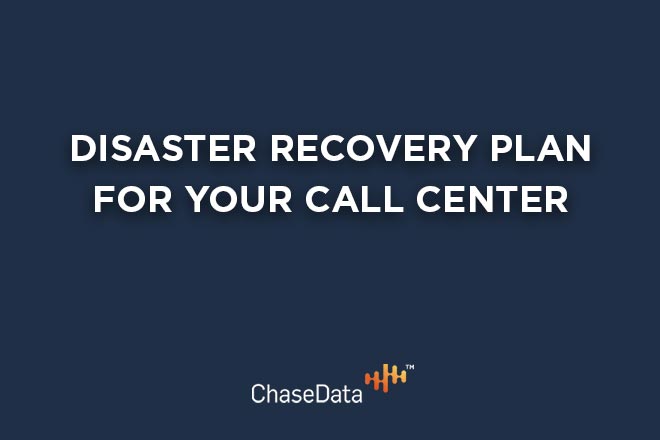Whether you’re taking precautions due to pandemics like COVID-19 or natural disasters such as tornadoes, hurricanes and blizzards, it is crucial to have a thorough disaster recovery plan prepared for your call center.
Your facility could experience outages that last for weeks. During that time, your business could lose thousands of calls, amounting to tens of thousands of dollars in lost revenue. One hour of a power outage can cost businesses between hundreds of thousands or even millions of dollars in revenue.
How to prepare for disaster recovery call center services
Potential disasters will eventually affect your call center; therefore, you must have a recovery plan ready.
- Prepare to work remotely. Be ready to react immediately when a disaster occurs so that you can make sure there is as little impact on your call center operations as possible. First, make sure that your employees (e.g. Call center agents, supervisors and managers) are up and running from home using cloud-based agent software.
- Reach out to your customers. Even if your call center is accustomed to taking inbound calls, now is the time to reach out to your customers and make them aware of what is happening and that they are able to reach out to your company for support.
- Have a cloud-based backup solution. When a disaster causes your company to lose power and data connectivity, having a cloud-based call center solution enables you to run your call center from the cloud independent of your physical location. Your agents, supervisors, trainers and managers are able to work effectively from home. ChaseData’s cloud-based software is the most effective way to guarantee operational continuity and uptime regardless of the disaster your company may face.
- Be prepared for customer questions. Regardless of your operational situation, today’s customers demand instant answers to their questions, concerns and problems. Provide your customers with up-to-date accurate information using every available communication channel. Web sites, social media, email blasts, IVR/on hold messages and new technologies such as automated AI speech synthesis for voicemail drops. These communications keep your customers calm and in the loop.
- Verify disaster recovery plan. Once you have a disaster recovery plan in place, it is important that you train your call center employees on how to respond in the event of a disaster, as a regular part of your training process. Take every opportunity to test your systems. Work from home days are the perfect opportunity to make sure that at-home-workers are able to connect and work seamlessly. Likewise call center agents can become accustomed to working from home as overflow agents during your company’s high call volume seasons or in the event of transportation or childcare emergencies. Every opportunity to test, refine and confirm that you plan works virtually guarantees that your disaster recovery plan will work when it is needed.
